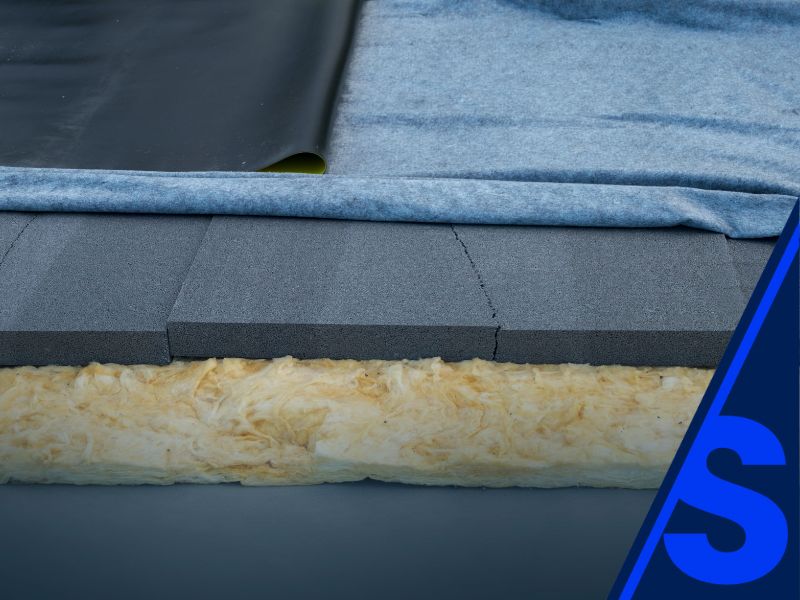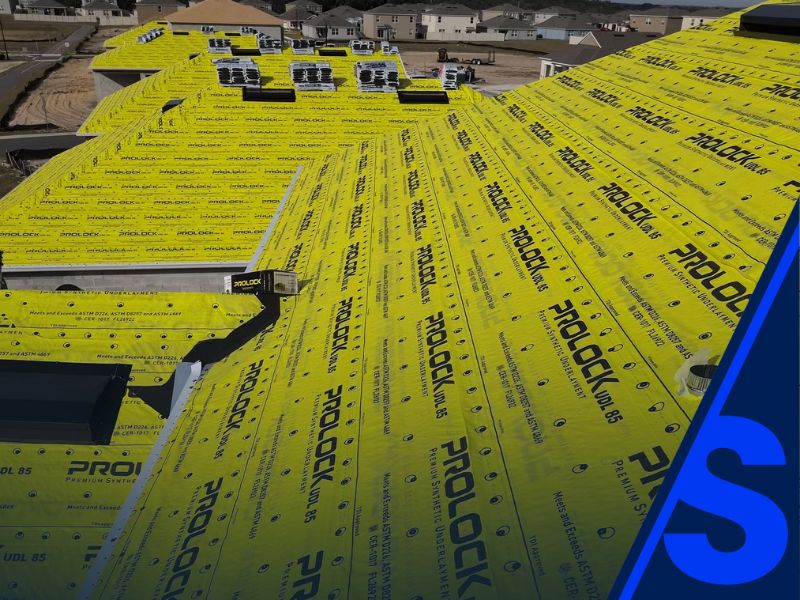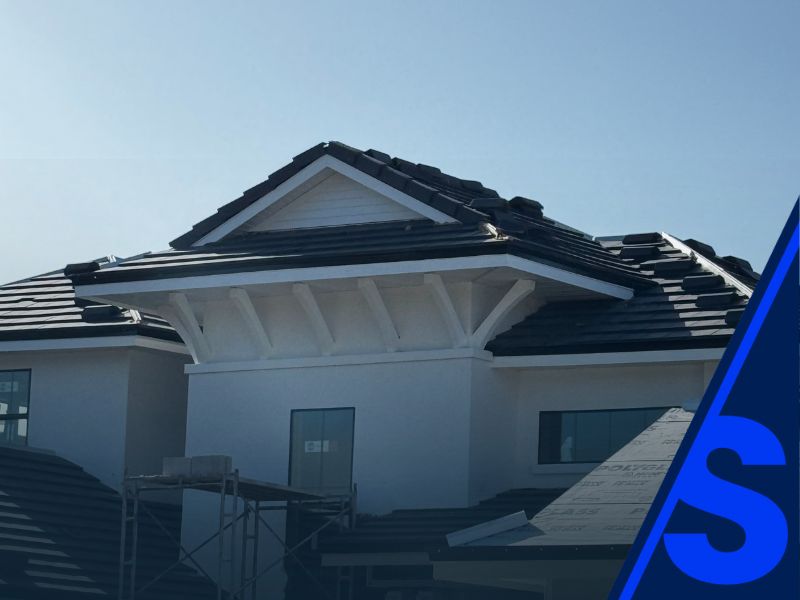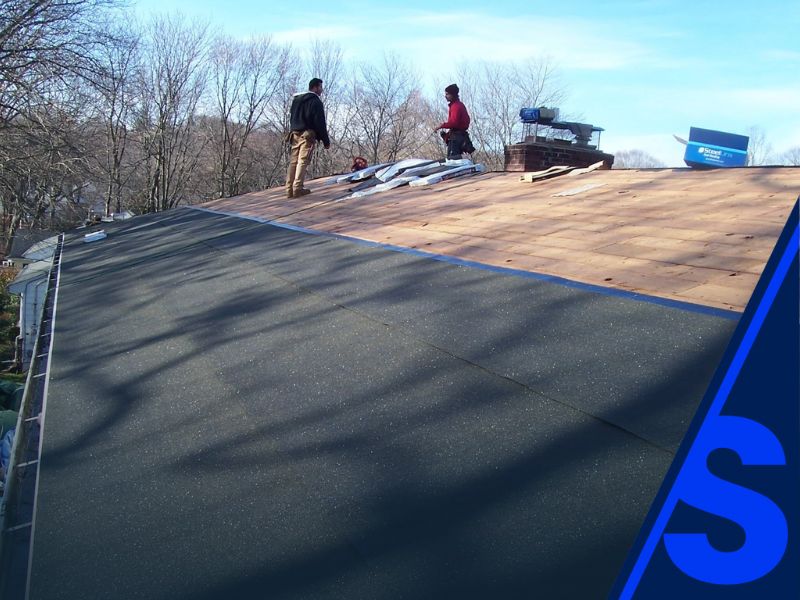Table of Contents
1. Introduction
In Florida, roof design isn’t just about aesthetics—it’s about survival. With scorching heat in the summer and powerful storm systems during hurricane season, the roof over a home plays a critical role in energy efficiency and structural protection. For home builders, especially those working on new construction or high-density residential projects, optimizing insulation within the roof system is essential.
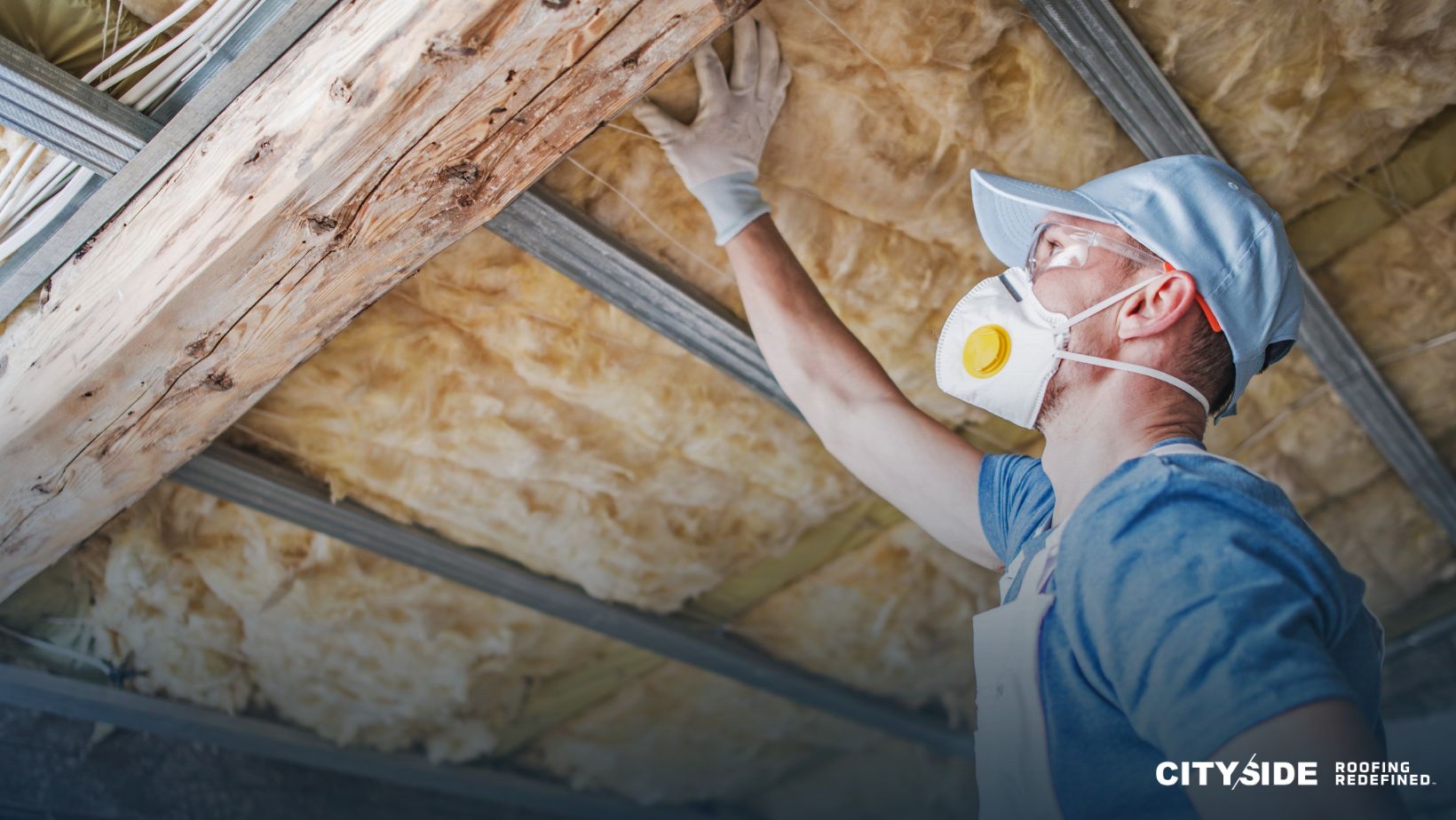
A well-insulated, energy-efficient roof not only minimizes energy consumption but also offers vital protection during storm season. From preventing moisture infiltration to reinforcing wind resistance, the right roofing system can make or break a property’s performance in Florida’s challenging environment.
In this guide, we’ll explore how home builders can design energy-efficient Florida roofs that are optimized for insulation, helping meet code requirements, satisfy eco-conscious buyers, and reduce operational costs. And when it comes to execution, partnering with a seasoned Roofing Contractor in Florida like CitySide Roofing is the smartest move for long-term success.
2. Why Roof Insulation Matters in Florida’s Climate
Florida’s climate is defined by high humidity, intense heat, and regular tropical storms. This combination puts roofing systems under tremendous pressure. Without proper insulation, Florida roofs can:
- Allow significant heat transfer, spiking energy bills
- Retain moisture, leading to mold and structural damage
- Fail to meet state energy efficiency codes
During storm season, poor insulation can also weaken a roof’s structural resilience. Trapped heat and moisture can warp materials, while inadequate sealing may let wind-driven rain infiltrate. For home builders, integrating insulation into roofing design isn’t optional—it’s a necessity for durability and comfort.
3. Key Components of Energy-Efficient Roof Design
Designing an energy-efficient roof goes beyond selecting the right shingles. The complete system must work together to:
- Reflect solar radiation
- Prevent thermal bridging
- Facilitate air movement and moisture control
- Strengthen resistance to wind uplift and water intrusion
Energy-efficient roof systems typically include:
- High-performance insulation (e.g., spray foam, rigid foam, or fiberglass)
- Radiant barriers
- Proper ventilation
- Reflective or cool roofing materials
- A waterproof underlayment
CitySide Roofing helps home builders design and install these integrated systems with precision, ensuring optimal thermal performance for new builds across Florida.
4. Best Roofing Materials for Storm and Heat Protection
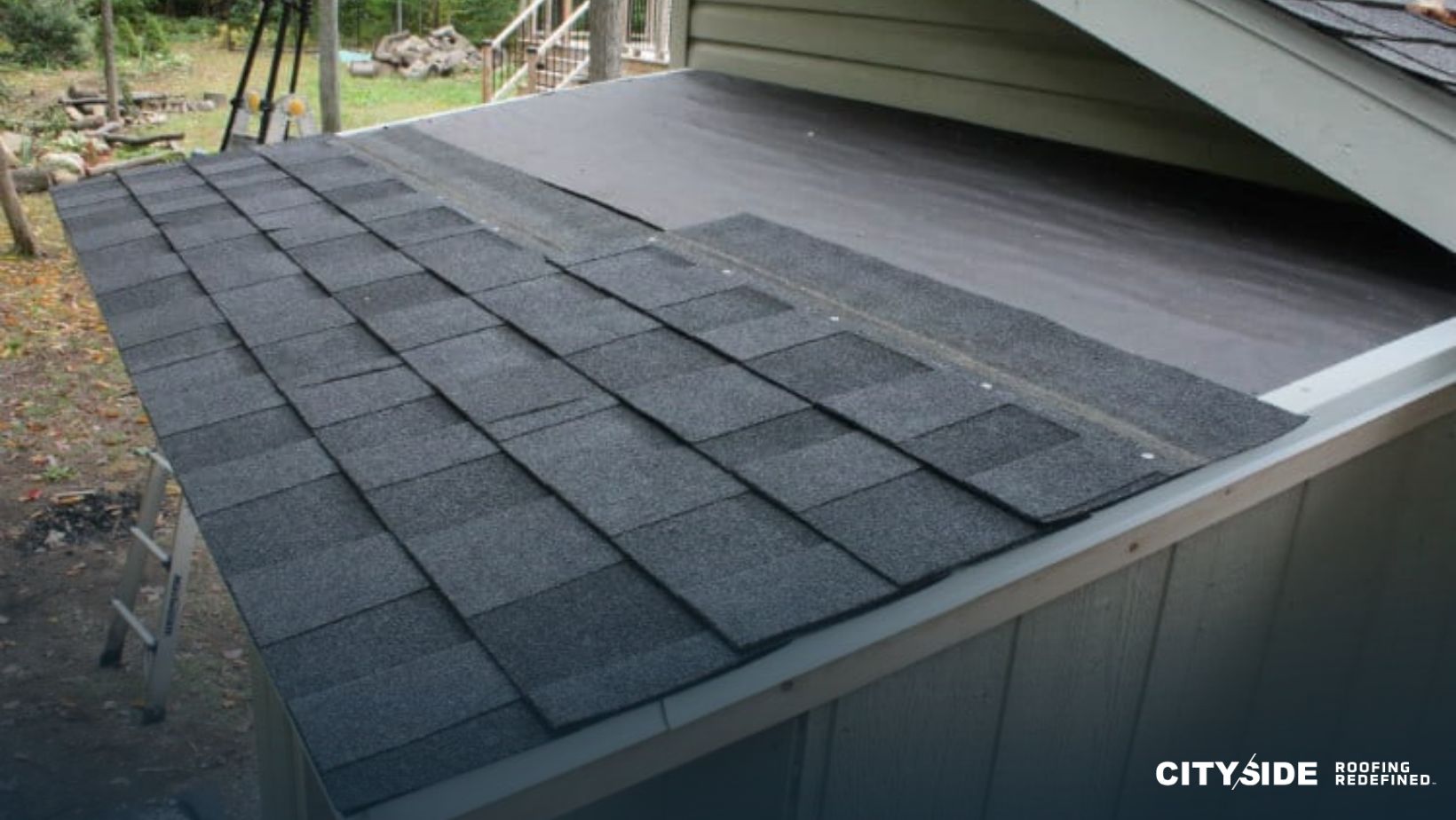
The right roofing material makes all the difference, especially in a state prone to hurricanes and heatwaves. Some of the most energy-efficient and storm-resistant materials include:
- Metal Roofing: Highly reflective, long-lasting, and resistant to wind uplift—ideal for Florida roofs.
- Clay or Concrete Tiles: Great thermal mass properties and strong wind resistance, though they may require reinforced support structures.
- Architectural Asphalt Shingles: A cost-effective option with storm-rated products available, especially when installed with enhanced underlayment.
- TPO or Modified Bitumen (for flat roofs): Excellent for large developments or low-slope roofs, with energy-efficient and waterproof qualities.
Selecting the right material should be based on local code compliance, energy performance, and the specific needs of the project. A trusted Roofing Contractor in Florida like CitySide Roofing can guide this process from concept to completion.
5. Insulation Types and Their Role in Efficiency
Insulation is the heart of any energy-efficient roof. Choosing the right type can greatly reduce energy costs while improving resilience during storms. Here are the top options for Florida:
- Spray Foam Insulation: Provides excellent air sealing and moisture resistance. It bonds directly to the underside of the roof deck and is perfect for irregular spaces.
- Rigid Foam Boards (Polyiso or EPS): High R-values per inch and strong structural properties. Often used in flat roof systems or layered over the sheathing.
- Fiberglass Batts: Common in attics and affordable, though they must be installed with vapor barriers and sufficient sealing to be effective in Florida’s humidity.
When installed properly, these materials help keep hot air out during summer and retain conditioned air, reducing HVAC workload. They also add to the wind uplift resistance, reinforcing the roofing system during storm season.
6. The Importance of Proper Ventilation
Roof insulation is only as effective as the ventilation system that supports it. Without adequate airflow, insulation can trap heat and moisture, creating a breeding ground for mold and rot. Best practices include:
- Ridge Vents & Soffit Vents: Promotes continuous airflow along the roof line.
- Powered Ventilation: Helps remove excess heat in larger developments.
- Balanced Air Exchange: Intake and exhaust must be properly calculated to avoid pressure imbalances.
CitySide Roofing designs balanced ventilation systems that enhance the performance of insulation and extend the life of Florida roofs.
7. Working with a Roofing Contractor in Florida
Florida’s roofing regulations, climate demands, and storm patterns require local expertise. Working with an experienced Roofing Contractor in Florida like CitySide Roofing ensures that your projects are:
✅ Fully compliant with the Florida Building Code
✅ Equipped with weather-resistant, energy-efficient materials
✅ Installed with precision by trained professionals
✅ Supported by warranties and expert consultation
CitySide Roofing works with home builders across Florida to integrate optimized roof designs that perform under pressure—both in the heat and during hurricanes.
8. Compliance with Florida Energy and Building Codes
Florida’s Energy Conservation Code requires strict R-values for roof insulation and encourages reflective roofing materials in new construction. The Florida Building Code also mandates:
- High wind-resistance ratings
- Secondary water barriers
- Impact-resistant materials in designated High-Velocity Hurricane Zones (HVHZ)
CitySide Roofing stays ahead of regulation changes and ensures that every build meets or exceeds code. We help builders avoid delays, rework, or fines by offering code-compliant solutions from the beginning.
9. Why Home Builders Trust CitySide Roofing
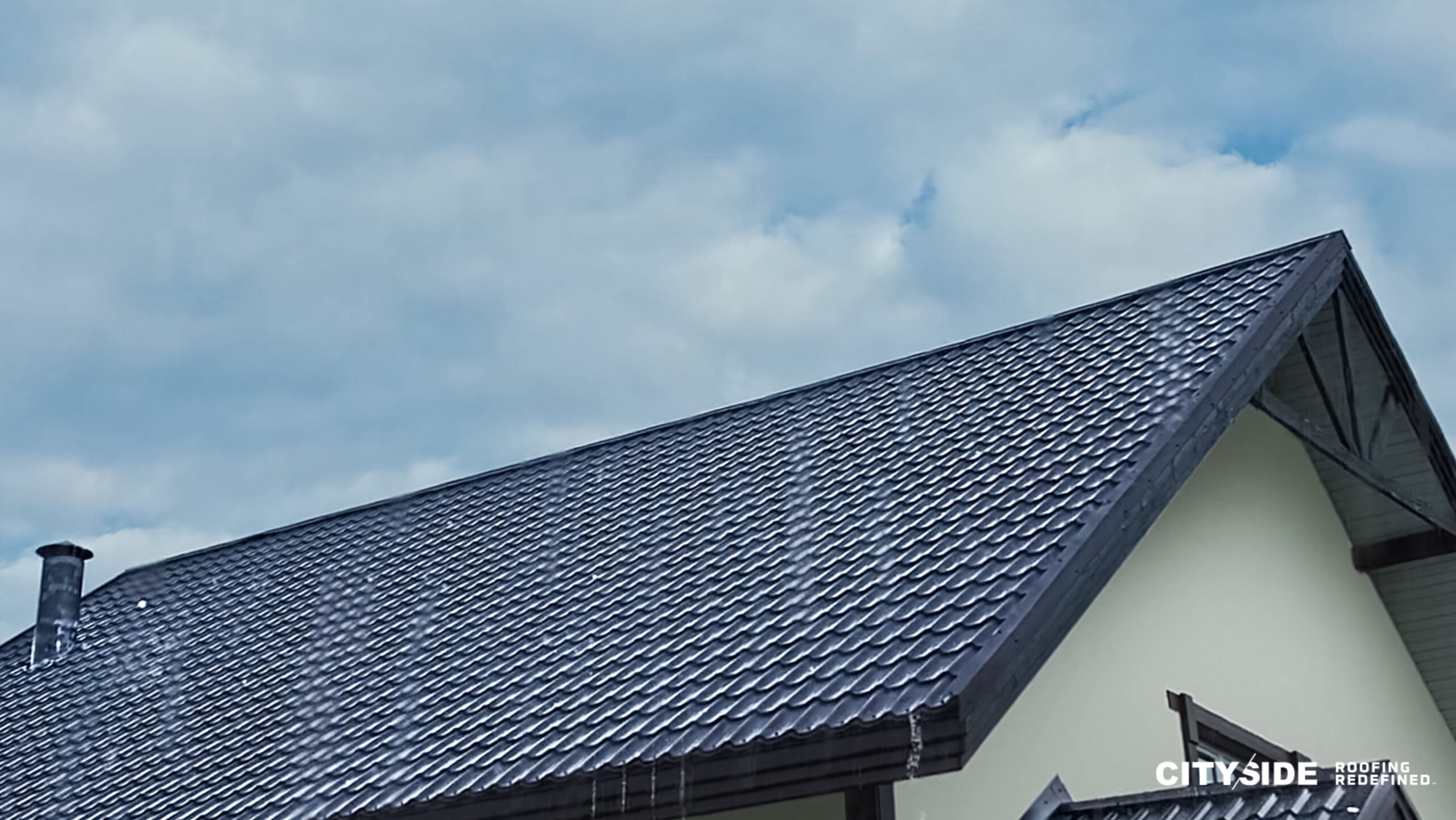
Home builders in Florida partner with CitySide Roofing for more than just top-tier installations. They choose us for:
- Deep Knowledge of Florida Roofing: We know the climate, the codes, and the challenges.
- Energy-Efficiency Expertise: We help builders meet energy standards with cost-effective insulation solutions.
- Storm-Resistant Systems: Our roofing systems are designed to withstand hurricane conditions.
- Builder-Focused Service: We collaborate with your team to ensure scheduling, compliance, and value align with your development goals.
Explore our full range of services at gocityside.com, or contact us today to discuss your upcoming project.
10. Conclusion
For Florida home builders, energy-efficient roofing isn’t just about reducing power bills—it’s about building homes that last through hurricane season and deliver comfort year-round. From selecting the right materials to designing insulation and ventilation systems that work in harmony, every detail matters.
By working with a proven Roofing Contractor in Florida like CitySide Roofing, you gain a partner that understands the unique roofing demands of this region and delivers top-quality, code-compliant solutions that stand the test of time.
Contact CitySide Roofing today to learn how we can help you build smarter, stronger, and more energy-efficient homes—roof by roof.
Related Reading: Affordable Roofing Solutions for First-Time Builder Projects in Florida
